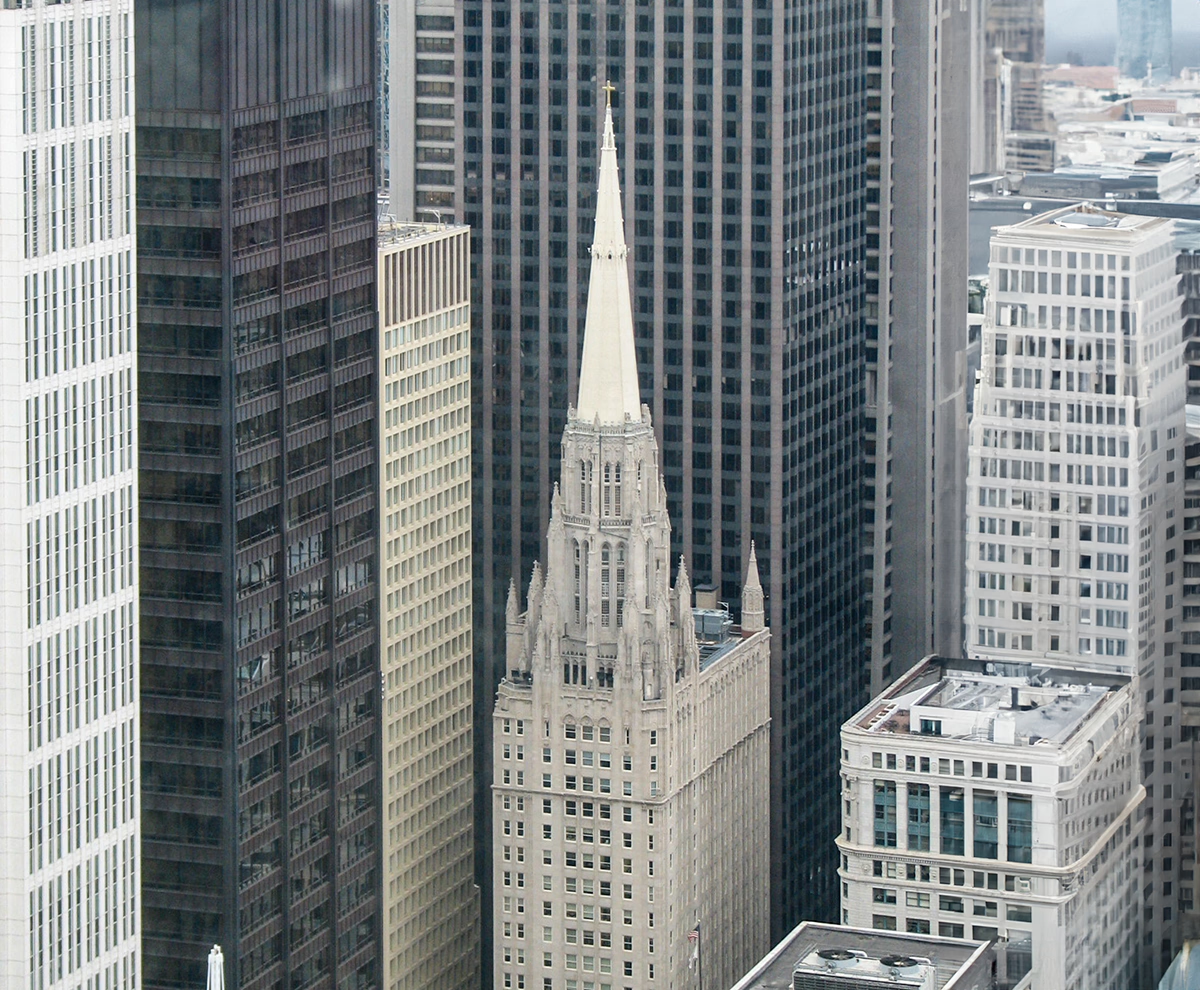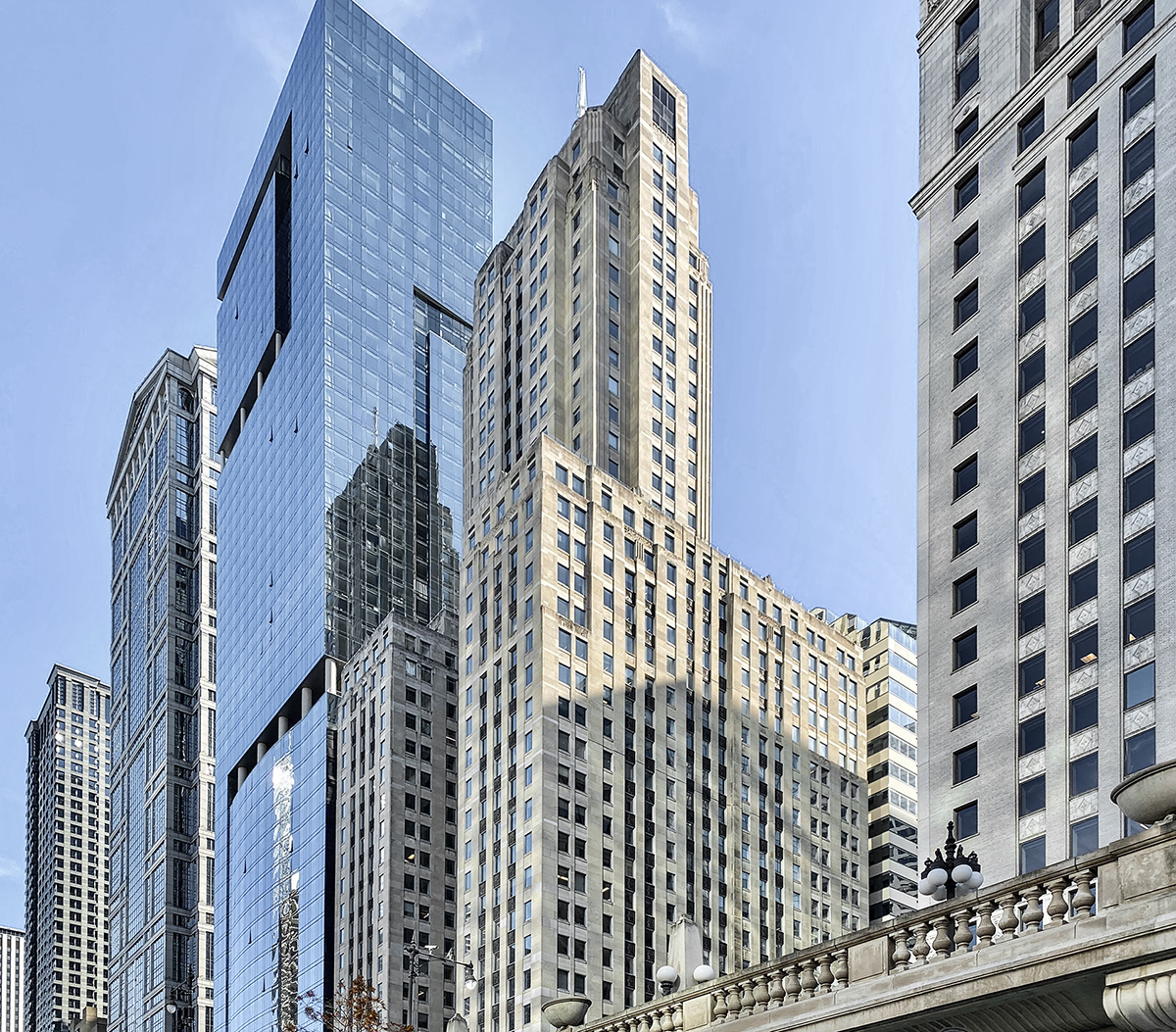Chicago Temple Building vs LaSalle-Wacker Building


Comparing the Chicago Temple Building and the LaSalle-Wacker Building is particularly interesting because they share the same skyline in Chicago, IL, and were both designed by Holabird & Root. However, they were completed more than 6 years apart.
This offers a unique perspective on how the architect's style and the city's architecture evolved over time.
Height & Size
These two towers present an interesting contrast in their proportions. The Chicago Temple Building rises higher at 568ft (173m), while the LaSalle-Wacker Building reaches 512ft (156m). However, the LaSalle-Wacker Building accommodates more floors with 41 levels above ground, compared to 23 floors in the Chicago Temple Building.
This suggests different approaches to interior space design. The Chicago Temple Building has an average floor-to-floor height of approximately 7.5m, while the LaSalle-Wacker Building has more compact floors averaging around 3.8m each. The taller building's more generous floor heights might indicate grander interior spaces, higher ceilings, or different programmatic requirements.
These different proportions likely reflect the specific needs each building was designed to serve, whether driven by zoning regulations, client requirements, or the intended use of the spaces within. The contrast shows how architects can achieve different spatial experiences even when working with similar overall building scales.
Architectural Style
The Chicago Temple Building was designed in the Neogothic style, while the LaSalle-Wacker Building reflects the principles of Art Deco.
The Chicago Temple Building represents a late expression of the Neogothic, a style already in decline in 1924 when it was completed. By contrast, the LaSalle-Wacker Building followed the then mainstream Art Deco, embodying the dominant architectural direction of its time.
Uses
The Chicago Temple Building is primarily religious, while the LaSalle-Wacker Building is primarily commercial.
The LaSalle-Wacker Building also provides 95 parking spaces.
Structure & Facade
Both the Chicago Temple Building and the LaSalle-Wacker Building rely on a Frame structural system.
A frame structure uses a grid of columns and beams to carry the building's loads. This frees the walls from structural duties, allowing for flexible floor plans and larger windows.
They also employ the same type of facade, a Masonry facade.
A masonry facade gives the building a heavier, more traditional appearance. It often conceals a frame structure behind it, creating the look of solid walls without carrying the main loads.
| Chicago Temple Building | LaSalle-Wacker Building | |
|---|---|---|
| Holabird & Root | Architect | Holabird & Root |
| 1923 | Construction Started | 1929 |
| 1924 | Year Completed | 1930 |
| Neogothic | Architectural Style | Art Deco |
| Religious | Current Use | Commercial |
| 23 | Floors Above Ground | 41 |
| 173 m | Height (m) | 156 m |
| 173 | Tip Height | 165.5 |
| Frame | Structure Type | Frame |
| Steel | Vertical Structure Material | Steel |
| Concrete | Horizontal Structure Material | Concrete |
| No | Facade Structural? | No |
| IL | State | IL |
| Chicago | City | Chicago |
| 77 West Washington Street | Address | 221 LaSalle Street |